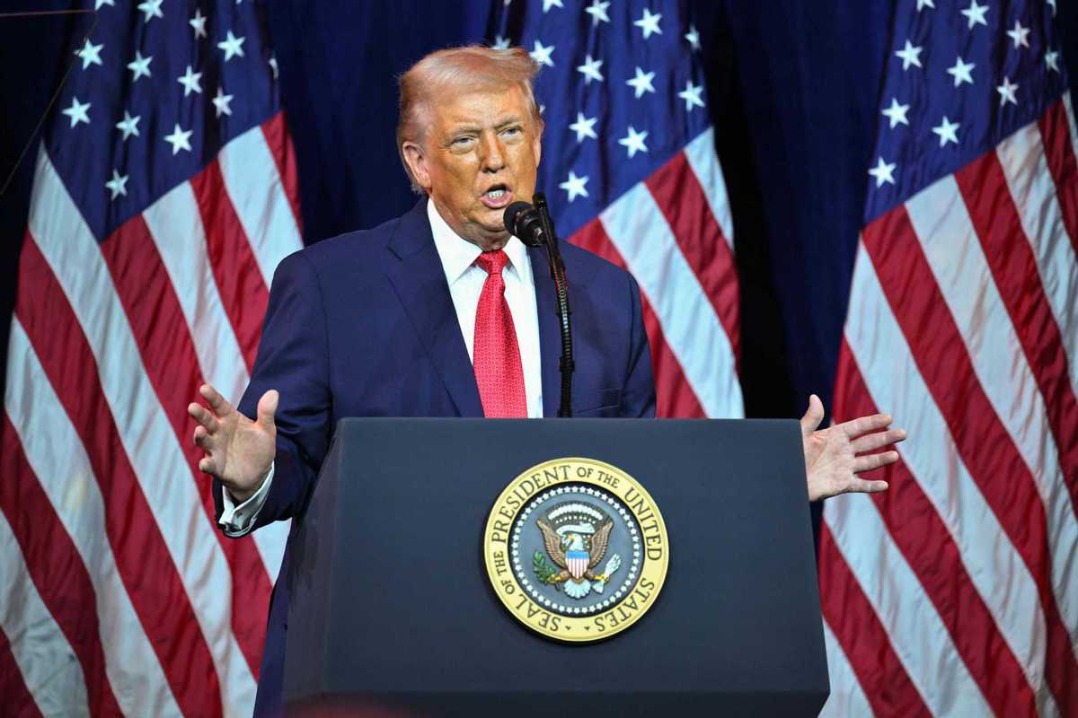Washington's attempts to 'de-risk' are harmful to all


All eyes were on San Francisco for the summit between President Xi Jinping and United States President Joe Biden, which was held alongside the Asia-Pacific Economic Cooperation Economic Leaders' Meeting.
It has been five years since the US launched a trade war against China. US tariffs on Chinese goods remain extremely high, even though domestic inflation has proved quite stubborn, despite the Federal Reserve raising interest rates to such a high level that it almost triggered the bankruptcy of many small and medium-sized banks.
Although the US has tried to slow down China's development, first by efforts aimed at decoupling the two economies, then by de-risking, and by imposing restrictions on technology exports to China, these efforts have harmed the US as well as China. Indeed, they have been harmful to the whole world. As the International Monetary Fund has warned, "a fragmented world is likely to be a poorer one." Even while the price is being paid for the US' actions, these actions are not happening in the way they were intended.
Total US-China trade hit a record high of $760.9 billion in 2022, despite US efforts to decouple. But trade with China as a proportion of GDP is a more accurate measure, some argue. Trade with China accounted for 3 percent of US GDP in 2022, down from the peak of 3.7 percent in 2014. In terms of US imports, China's share of US imports has plummeted to 13.3 percent from a peak of 21.6 percent in 2017.
Although it seems decoupling is happening, when we look into the US multilateral trade deficit and the global value chains behind it, China is still there, embedded in the global economy. The US' high trade deficit is a result of its low domestic savings rate and China's dominant advantage in manufacturing, which is still manifested in the global value chain.
In 2022, despite a reduction in the trade imbalance with China, the total US merchandise trade deficit still hit a record $1.19 trillion, accounting for 4.7 percent of US GDP. Given the fast-growing intermediate goods trade between China and other countries, the trade war has clearly not succeeded in decoupling the US from China.
Since the start of the US-China trade dispute in 2018, the Association of Southeast Asian Nations' imports from China have increased, as ASEAN has become a conduit for indirect Chinese exports to the US. The same is true of India. It's clear that decoupling is not happening. China and the US not only coexist on the planet, but also in the global economy.
This year, the buzzword "de-risking" suddenly appeared as a rhetorical alternative to decoupling. The Biden administration's aggressive sanctions on exports of advanced semiconductors to China have been imposed under this banner. The trade diversion from China shifts the deficit from a low-cost provider of imported goods to higher-cost producers, causing a tax for domestic companies and consumers, while the tech restrictions are unlikely to guarantee US technological dominance in the long term.
The consequences of such attempts are fourfold.
First, although many politicians and commentators believe that tech restrictions on China will hobble its ability to catch up, the dynamism that China has exhibited for the past four decades suggests otherwise. China's total share of the world's value-added manufacturing keeps rising. It now accounts for 31 percent. Moreover, US sanctions have strengthened China's determination to develop its own technology. China is now the world's second-largest market as well as the largest semiconductor market, accounting for more than 31 percent of global sales and 36 percent of US semiconductor sales.
Second, this lurch toward confrontation hurts the global economy and could lead to a financial crisis. Global supply chains become less efficient and more costly, leaving central banks alone to manage price growth by suppressing excess demand, which is much more challenging. The rapid monetary tightening brings about financial stress and bouts of instability, especially when debt levels are substantial. A soft landing becomes harder because of the downward trend in productivity growth, due to global aging and a fragmented global economy with barriers to technology development and diffusion.
Third, for many countries, greater resilience is not only about friend-shoring away from China, but also includes less dependence on the US dollar. Emerging economies have long suffered from the US financial cycle and are now seeking alternatives to the US dollar. This is not an immediate threat to the dollar's global dominance, considering the absence of a viable solution, but central banks are tending to hold more gold than before.
Last, it could cost the US its reputation trying to "silo" China's science and technology. Other countries will wonder whether they will be the next if they also succeed in developing their economies. They will recall Japan's experience in the 1980s, and now China's. Furthermore, as developing countries care more about economic development than political ideology, China's exports of intermediate goods and international productive capacity cooperation are still appealing to them. A compelled tech split would be extremely unpopular worldwide.
Accordingly, the de-risking game is not going to have the effect that US politicians think it will. Although the readout of the two national leaders' summit paid scant attention to concrete issues such as trade and technology, which surprised the market, we have solid reasons to hope for a solution to the US-China dispute and a better model of productive competition.
The author is an assistant research fellow at the Development Research Center of the State Council.

































